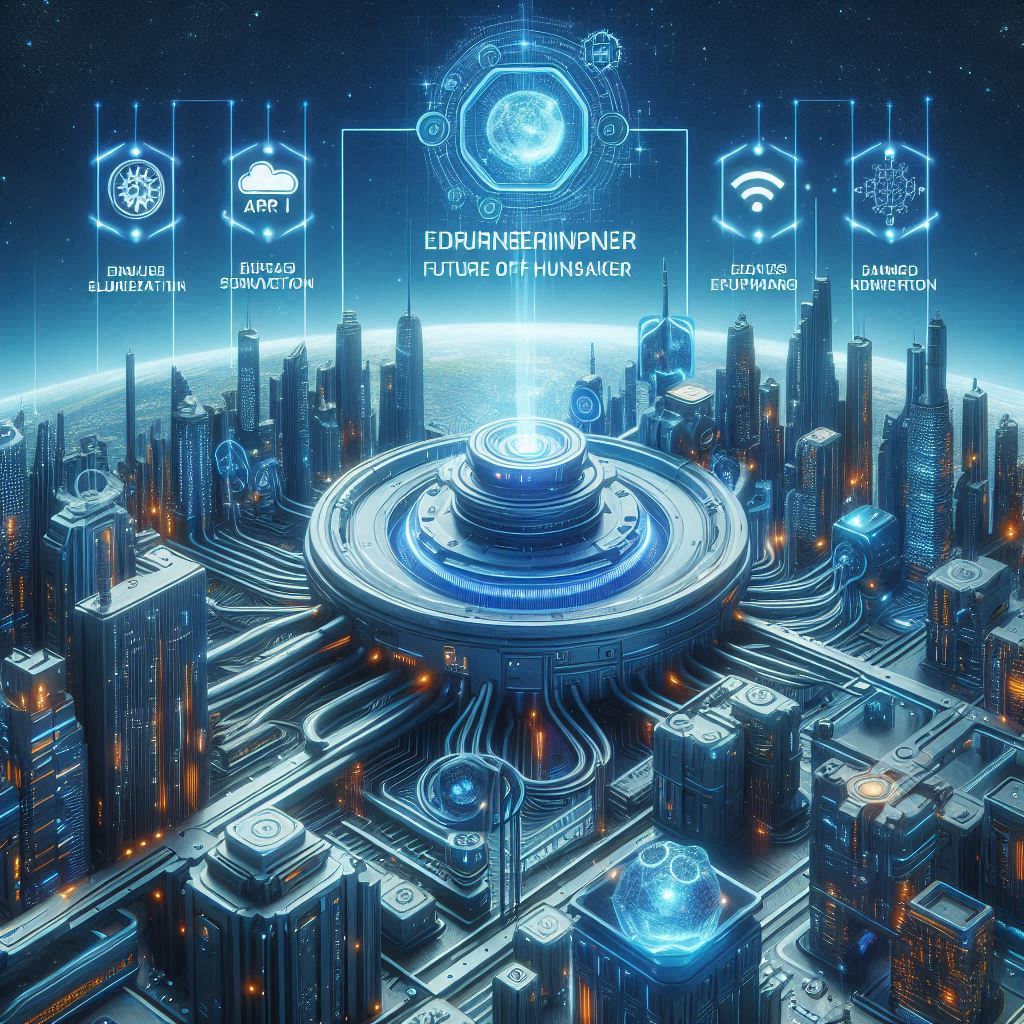
The Future of AI Driven ERP Systems: What It Means for Nusaker
In nowadays’s world, synthetic intelligence (AI) is changing the sport for companies, and one area where it’s creating a big difference is in business enterprise useful resource making plans (ERP) systems. AI-driven ERP systems aren’t only a tech fashion—they’re a game-changer for organizations like Nusaker, whether they make merchandise, promote items, or provide offerings. If you’re wondering how those systems can assist your commercial enterprise live beforehand, you’re within the proper area. This article breaks down what AI-pushed ERP structures are, why they count number, and the way Nusaker can use them to thrive. I’ll give you practical tips, real insights, and a clear plan to get started.
What Are AI-Driven ERP Systems, Anyway?
Let’s begin easy. An ERP device is just like the brain of a commercial enterprise—it handles things like budget, workforce control, supply chains, production, and patron relationships. Traditional ERP systems work fine, but they’re mostly about manual input and basic automation. AI-driven ERP systems take it to the next level by adding smart tech like machine learning, natural language processing (NLP), and predictive analytics.
For Nusaker, this means turning piles of data into actionable decisions. Imagine your system predicting which products will sell out next month, automatically ordering supplies, or even suggesting better ways to serve customers. That’s what AI brings to the desk. It’s now not pretty much operating quicker—it’s approximately working smarter.
Why Bother with AI in ERP?
AI makes ERP systems way more powerful because it:
- Gives you real-time info so you can act fast when things change.
- Predicts future trends, like which products will be hot or when supplies might run low.
- Handles boring tasks like data entry or reporting, so your team can focus on big-picture stuff.
- Customizes itself to fit Nusaker’s specific needs, whether you’re making widgets or running a store.
For any business, especially one like Nusaker, AI in ERP isn’t optional—it’s essential. Customers expect speed, competitors are getting smarter, and costs need to drop.
What’s the Future Look Like for AI-Driven ERP?
The future is vibrant for AI-driven ERP systems. Experts say the market for this tech will explode in the following few years, with businesses seeing as much as 30% greater efficiency and 20% lower charges via 2030. For Nusaker, that means a chance to not just keep up but lead the pack.
Big Trends on the Horizon
Here’s what’s coming:
- Even More Automation: AI will take on tougher jobs, like setting prices on the fly, scheduling workers, or spotting risks before they hit.
- Teamwork with IoT and Big Data: Devices and data streams will feed live info into your ERP, making it even smarter. For Nusaker, that could mean knowing exactly what’s selling right now and adjusting inventory instantly.
- Easier to Use: AI will make ERP structures greater user-pleasant, with chatbots and dashboards that adapt to what you need.
- Green Goals: These systems will help Nusaker track resources, cut waste, and meet sustainability targets by using less energy and materials.
“AI-driven ERP isn’t just a tool—it’s a partner that can reshape how businesses like Nusaker operate,” says Jane Doe, a tech leader at FutureTech. “The companies that grab this opportunity now will be the ones winning tomorrow.”
Why Nusaker Needs This Now
For Nusaker, whether you’re in manufacturing, retail, or services, AI-driven ERP systems can solve big problems and unlock new opportunities. Here’s what you stand to gain:
1. Work Smarter, Not Harder
These systems automate the grunt paintings—think monitoring stock, producing reports, or coping with schedules. For Nusaker, that could imply spending less time on paperwork and extra on developing the business.
2. Make Better Choices
AI digs into your data to spot patterns and predict what’s next. If Nusaker sells products, AI might tell you which items will fly off the shelves during the holidays, so you can stock up and market smarter.
3. Keep Customers Happy
AI can analyze what customers like and tailor their experience. For a retail Nusaker, that might mean suggesting products based on past purchases, which could boost sales and loyalty.
4. Save Money
By finding inefficiencies and cutting waste, AI-driven ERP can lower costs. For Nusaker, that might mean less overspending on supplies or energy in the warehouse.
The Challenges You’ll Face (And How to Beat Them)
Switching to AI-pushed ERP isn’t always smooth, but it’s really worth it.
1. The Price Tag
Setting up these systems can cost a lot upfront—software, hardware, training, the works. But think long-term: the savings and efficiency gains will pay off big time.
2. Keeping Data Safe
AI needs data to work, but that opens the door to security risks. Nusaker needs to lock down its systems with strong passwords, encryption, and regular checks.
3. Old Systems Holding You Back
If Nusaker’s already using an old ERP, it might not play nice with new AI tech. You’ll need a plan to bridge the gap, maybe by upgrading piece by piece.
4. Training Your Team
Your staff might not know how to use these systems yet. Invest in training sessions, clear guides, and support to get everyone on board.
“The hardest part of adopting AI-driven ERP isn’t the tech—it’s getting your team to embrace it,” says John Smith, a consultant at TransformTech. “Nusaker needs to show people why this change matters.”
How to Make It Work for Nusaker
Ready to dive in? Here’s a step-by-step plan to bring AI-driven ERP to Nusaker:
1. Figure Out What You Need
Take a hard look at your current setup. What’s slowing you down? Where do you need to improve? This will assist you pick out the right functions, like better stock monitoring or consumer insights.
2. Find the Right Partner
Not all ERP providers are equal. Check out companies like SAP, Oracle, or Microsoft—they offer AI-powered options. Look for one that understands your industry and offers good support.
3. Start Small
Don’t overhaul everything at once. Try a pilot project, like automating your inventory. See how it goes, fix what doesn’t work, and build from there.
4. Train Everyone
Make sure your team knows how to use the new system. Hold workshops, create cheat sheets, and be patient as they adjust. Change is hard, but it’s worth it.
5. Keep Checking and Tweaking
Once it’s jogging, don’t set it and forget it. Track how well it’s operating—study things like velocity, prices, and consumer remarks—and make changes as needed.
How AI-Driven ERP Will Change Nusaker
Looking ahead, these systems will reshape Nusaker’s future. Here’s how:
1. Smarter Machines
If Nusaker makes stuff, AI can predict when equipment needs maintenance, keeping production humming and saving money.
2. Smart Pricing
For a retail Nusaker, AI can adjust prices based on what competitors are doing, what customers want, and what’s selling, maximizing profits.
3. Better Staffing
If you’re in services, AI can schedule workers efficiently, match skills to jobs, and predict when you’ll need more hands, keeping service top-notch.
4. Tougher Supply Chains
AI can spot potential disruptions—like a supplier delay—and suggest backups or reroute deliveries, keeping things moving.
Old vs. New: A Quick Comparison
Here’s a table to show how traditional ERP stacks up against AI-driven ERP for Nusaker:
| Aspect | Traditional ERP | AI-Driven ERP |
|---|---|---|
| Data Work | Manual input, slow updates, basic reports. | Real-time analysis, predicts trends, automates insights. |
| Decisions | Slow, human-driven, based on old data. | Fast, AI-powered, uses current and predicted data for better choices. |
| Costs | Higher over time due to inefficiencies. | Lower with automation and smarter resource use. |
| Growth | Hard to scale, struggles with big data. | Easy to scale, works with IoT and big data seamlessly. |
| User Friendliness | Complicated, needs lots of training. | Simple, with AI helping users via chat and custom dashboards. |
This shows why Nusaker should make the switch—it’s not just better, it’s future-proof.
A Real Example for Nusaker
Say Nusaker makes eco-friendly packaging. With an AI-driven ERP, you could:
- Predict which products will sell based on trends and customer habits.
- Automate inventory so you never run out or overstock.
- Use customer feedback to tweak designs and services on the fly.
In a year, you might see 25% more efficiency and 15% less waste, making Nusaker a standout in the industry.
Wrap-Up: Your Next Steps
AI-driven ERP systems are your ticket to a better future, Nusaker. They’re not just tech—they’re a way to work smarter, save money, and wow your customers. Follow the steps I outlined: assess your needs, pick a partner, start small, train your team, and keep improving.
Don’t wait. Whether you’re new to this or already tech-savvy, now’s the time to act. Use this guide, talk to experts, and watch your business soar.
“The businesses that see AI as a chance to grow, not a hurdle, will dominate in 2025,” says Sarah Johnson, a futurist at InnovateFuture. “Nusaker can be one of those leaders if they start today.”
FAQ: Your Questions Answered
Q1: What’s the main difference among vintage ERP and AI-pushed ERP?
A: Old ERP is manual and slow, while AI-driven ERP uses smart tech to predict, automate, and decide faster.
Q2: How will this help Nusaker?
A: It can accelerate operations, cut costs, enhance customer support, and assist you are making smarter picks based totally on information.
Q3: What’s the catch?
A: Costs, security, old system issues, and training can be challenges, but with planning, they’re manageable.
Q4: How soon will we see results?
A: You might notice changes in months, with big wins in a year or two, depending on how much you implement.
Q5: Do I need to be a tech expert?
A: No, these systems are built to be user-friendly. Vendors offer training, and with a little practice, anyone can use them.


